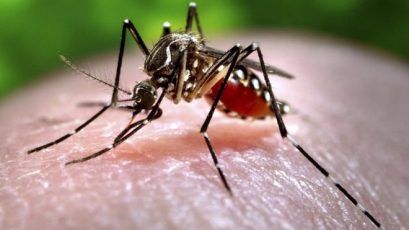Under the auspices of WHO/Europe and within the framework of the International Health Regulations (IHR), 14 experts have for the first time identified and agreed on criteria for standard procedures for the elimination of insects from passenger aircraft.
At the gathering in Frankfurt, Germany on 1 September 2017, the group initiated preparatory work for the development of global standard procedures on mosquito control that will upgrade and extend to passenger aircraft those currently established for cargo flights.
 Entomologists, chemical experts, specialists in public and occupational health, and aviation experts answered the call from aircraft operators to provide guidance. They also recommended that further discussion focus on ensuring the effectiveness of procedures and on selecting substances for mosquito control that are licensed across regions. The meeting was also an opportunity to address identified gaps in existing guidance on procedures implemented in European countries.
Entomologists, chemical experts, specialists in public and occupational health, and aviation experts answered the call from aircraft operators to provide guidance. They also recommended that further discussion focus on ensuring the effectiveness of procedures and on selecting substances for mosquito control that are licensed across regions. The meeting was also an opportunity to address identified gaps in existing guidance on procedures implemented in European countries.
The increasing volume of passengers and goods travelling across the globe means increasing risks for public health due to more opportunities for diseases to spread. The IHR include provisions that outline obligations and recommendations for countries to prevent, prepare for and respond to public health risks associated with traffic at the so-called “points of entry” (i.e. airports, ports and ground crossings).
The development of new measures for passenger aircraft to prevent the spread of mosquito-borne diseases – such as malaria, Zika or chikungunya – requires globally agreed procedures. The IHR emphasize that measures to respond to public health threats and emergencies should not interfere with travel and trade beyond what is strictly necessary, and such procedures need to be quick to implement to ensure minimal interference with air traffic.
Original source: WHO
Published on 26 September 2017

